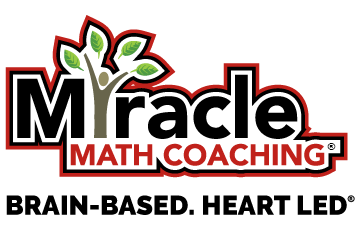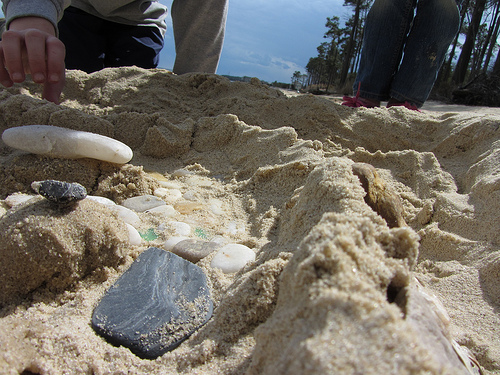
By Deanna Hurn, Founder and Executive Director of Miracle Math CoachingAfter losing 93 pounds and releasing the mental fog of not giving my brain and body the optimal nutrition it needs, I’ve been super excited about March – National Nutrition Month. Although we’re at the tail end of the month, it’s not too late to give you tips for healthy eating. I’m making sure my beautiful girls are learning as much as possible about good nutrition.Here’s one of my favorite posts with just that kind of info:A friend of mine saw a woman in Costco wearing a t-shirt that read, “How to Prepare Kale: 1) Throw in trash. 2) Make some Nachos.”It’s funny we believe food that’s bad for you (like ice cream, pizza and nachos) tastes a whole lot better than food that’s good for you. Not always true. If you make a lifestyle change as I did, you can make some pretty darn tasty food using healthy super foods like the much-revered Kale.I love that National Nutrition Month makes me think of brain food because Miracle Math’s unique curriculum focuses on brain-based learning. We personalize lesson plans to maximize how each individual child’s brain works. And guess what? I have personally experienced and know that certain foods stimulate the brain and promote good memory more than others. Yes it’s true!High on the list are Greek yogurt, seeds and nuts, fish, leafy greens (yes, like Kale) and oatmeal. And here’s a tip: Kale tastes a whole lot better in a fruity smoothie or milk shake. I like kale in my morning smoothies, and I’ve also eaten it in my 8 ounce dinner salad.Moms and Dads, do this for yourself as well as your children. Did you know that your habits in the kitchen will help to shape and mold the habits of four generations ahead of you? Get some idea online. I used Youtube and an easy app called “Yummly” to learn how to make nutritious meal that are yummy.You can also just google “kale” or just “spinach smoothies” and pull out the blender. I hope to use Facebook Live video to demonstrate my favorite meals to cook and smoothies to make for my family.One of my favorite family breakfast meals is a quick homemade greek yogurt parfait using 8 ounces of greek yogurt, 3 ounces of granola and my favorite fruit. Simple, right? I give my girls about 4 or 5 ounces of fruit-flavored yogurt and 1 to 2 ounces of granola.Other recommendations from nutritionists include eating more brown rice (not white), whole grain breads and cereals, quinoa, couscous etc. If you are trying to lose weight, I’d omit the bread until you reach your goal. Then you can add it back in slowly and in moderation.And, of course, leave it to me to show you how to encourage good food choices by teaching your children Math skills at the same time. Here are a few ways to do just that:Follow the “Five a Day” rule. Nutritionists says that we should eat at least five servings of vegetables or fruit each day. Encouraging your young ones to keep track of their daily goal is a great way to get them to think about numbers.Prepare a simple chart with the days of the week at the top of each column. For each day, discuss with your child which fruits and veggies to eat. Have him or her draw and color those foods under the appropriate day. After a breakfast of apple slices and cereal, ask, “How many more servings are left on the chart for today?” “How many are fruits and how many are vegetables?”Skip the counting and coloring for older kids. Instead, at the end of the day, ask “What percentage of the servings were fruit? What percentage vegetables? Have them look up the number of calories and vitamins in each serving. “How many calories from fruits and veggies have we had today? “How much Vitamin A or C?”(Just in case they ask, neither ketchup nor relish count as a vegetable 🙂Cook a meal together. Measuring ingredients is a great way to teach Math skills. Your child will also be able to practice reading and following directions. Baking, especially, requires exact measurements. Have older kids double or half a recipe. They can even tackle the metric system, for example, by converting a recipe in metrics to one using teaspoons and cups (Again, google is your friend for finding metric-oriented food instructions.)One parenting expert suggests making a simple dish like a fruit salad and having younger children count the number of grapes, slices of banana or pieces of pineapple you use. She also recommends rolling out cookie dough and cutting out the numbers one through 10.And let them count the number or potatoes or tomatoes or carrots used to prepare dinner.Let’s keep the learning going. I have so much more I’d love to share with you! Give our Miracle Math support team a buzz if you really want to learn more about how to help your student reach his or her highest learning potential (707-398-3474). Or ask for me directly. Many parents and student just like you have learned so much from our FREE Learning Discovery Evaluation Click here to sign up now.At Miracle Math, we use a trade secret approach to accurately match up the students to the coaches. This allows the students to enjoy and grow on an academic as well as a personal level. All of our coaches are professional educators with extensive training, who you can respect and trust.From children to teens to adults, your brain is never done learning. And that’s why we love it! Curious how your student’s brain works? Check out the free assessment to learn more or call us at (707) 398-3474.






